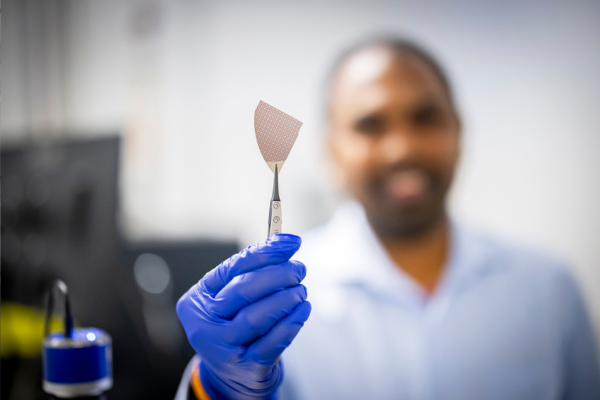Researchers develop heat resistant data storage technology
The key to this technology lies in the utilization of ferroelectric aluminium scandium nitride (AlScN), a material renowned for its exceptional properties even at elevated temperatures.
 Researchers were led by Deep Jariwala, an associate professor in the school of engineering at the university. / Image: University of Pennsylvania
Researchers were led by Deep Jariwala, an associate professor in the school of engineering at the university. / Image: University of Pennsylvania
Researchers at the University of Pennsylvania have developed a first-of-its-kind memory device capable of withstanding high temperatures surpassing 600 degrees Celsius.
Led by Indian-origin professor at the school of engineering, Deep Jariwala, the breakthrough, can help transform data storage capabilities, opening doors to applications in extreme environments from deep-earth drilling to space exploration.
The researchers demonstrated endurance and stability in their memory device, by maintaining functionality for over 60 hours under extreme conditions. Unlike commercially available drives which typically falter around 200 degrees Celsius, this innovation marks a leap forward, boasting more than twice the tolerance of any existing storage solution on the market.
The key to this technology lies in the utilization of ferroelectric aluminium scandium nitride (AlScN), a material renowned for its exceptional properties even at elevated temperatures.
Dhiren Pradhan, a postdoctoral researcher in Deep Jariwala and Roy Olsson’s labs, the paper's lead author, emphasized AlScN's remarkable ability to retain electrical states crucial for data storage, even in the face of extreme heat.
"AlScN's unique characteristics made it an ideal candidate for high-temperature data storage," noted Pradhan, the lead author of the study. "Its ability to retain electrical states even under extreme heat was truly remarkable."
The team's meticulous engineering of the memory device, incorporating a metal-insulator-metal structure with precisely optimized thickness, ensured both resilience and rapid data processing.
“The stability of our memory device could allow integration of memory and processing more closely together, enhancing speed, complexity, and efficiency of computing. We call this ‘memory-enhanced compute’ and are working with other teams to set the stage for AI in new environments,” Jariwala explained.
"Our device design was the result of months of collaborative effort, striking a delicate balance between durability and functionality," added Pradhan.
ADVERTISEMENT
ADVERTISEMENT
E Paper
Video



 Malvika Choudhary
Malvika Choudhary





.png)






Comments
Start the conversation
Become a member of New India Abroad to start commenting.
Sign Up Now
Already have an account? Login